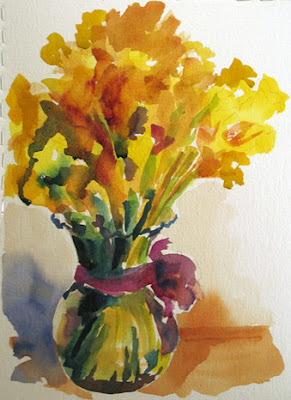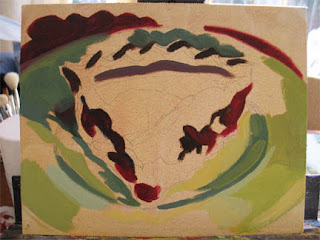

Been awhile since I posted here, been so busy fretting about a major move and keeping up with the daily painting. Did sign up for Kate's online watercolor class (Kate Johnson, for those of you not in EDM) and it's made me jealous to work in watercolors. So last night, after I finished the painting for the day, I got out the watercolors and had some fun. It is a touchy medium, but when you get a good result, it's such a joy. I had a student once who always said "Even a blind squirrel gets a nut once in awhile!" so there's the mantra for doing watercolors.
Thanks for looking.












